Pediatric Cystoscopy

PEDIATRIC CYSTOSCOPY
Pediatric cystoscopy is where a doctor looks into the bladder with a special telescope called a cystoscope. It is done for various reasons.
What is a cystoscope?
A cystoscope is a thin telescope which is passed into the bladder via the urethra (the tube that takes urine from your bladder to the outside of your body). There are two types:
- Flexible cystoscope is a thin, flexible, fibre-optic telescope.
- Rigid cystoscope is a thin, solid, straight telescope.
Pediatric cystoscopes are smaller in size as compared to adult cystoscope.
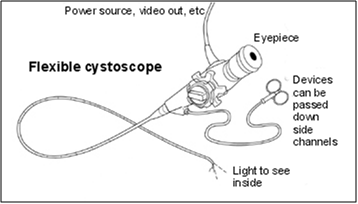
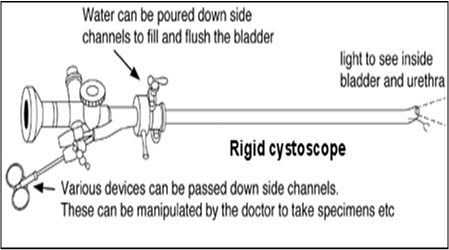
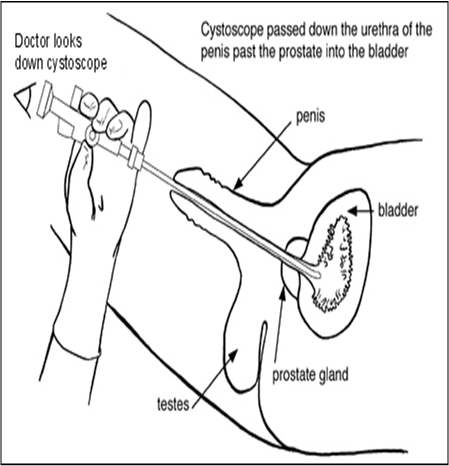
When is a cystoscopy done?
TO HELP WITH DIAGNOSIS
A cystoscopy may be done to help to find the cause of symptoms such as:
- Frequent urinary tract infections.
- Blood in your urine (haematuria).
- Persistent pain when you pass urine.
- Difficulty in passing urine (which may be due to prostate enlargement or a stricture (narrowing) of the urethra).
- TO MONITOR PROGRESS OF CONDITIONS
For example, some people have a routine cystoscopy every now and then after treatment for a bladder tumour. This helps to detect any early recurrence which can be treated before it spreads further.
- TO TREAT CERTAIN CONDITIONS
- Cut the membrane or valve which is obstructing across the free passage of urine through pee tube i.e. urethra (Posterior urethral valves)
- Remove or crush a stone from the bladder.
- Remove small polyps or tumours from the lining of the bladder.
- Insert a stent (a small tube) into a narrowed ureter. This helps the flow of urine if there is a narrowing.
What happens during a cystoscopy?
Your child needs to wear a hospital gown and lie on his or her back on a couch. The opening of urethra (at the end of the penis or the outside of the vagina) and the nearby skin will be cleaned. Some ‘jelly’ is then squirted into the opening of the urethra. The jelly usually contains a local anaesthetic to numb the lining of the urethra. This helps the pediatric cystoscope to pass into the urethra with as little discomfort as possible.
The doctor will then gently push the pediatric cystoscope up into the bladder. The doctor will look carefully at the lining of the urethra and bladder.
A cystoscopy takes about 5-10 minutes if it is just to look inside the bladder. It may last longer if the doctor does a procedure – for example, taking a biopsy (small sample) from the lining of the bladder. The cystoscope is then gently pulled out. Your doctor may tell you what they saw inside your child’s bladder straight after the test.
In some cases a general anaesthetic is given when a cystoscopy is done, particularly if a rigid cystoscope is used. In some cases a regional anaesthetic is given which numbs all the lower half of the body.
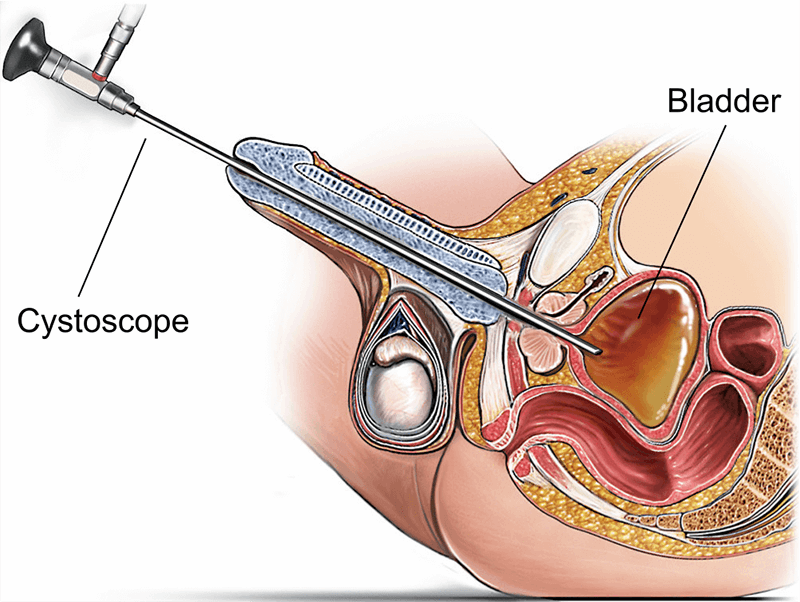
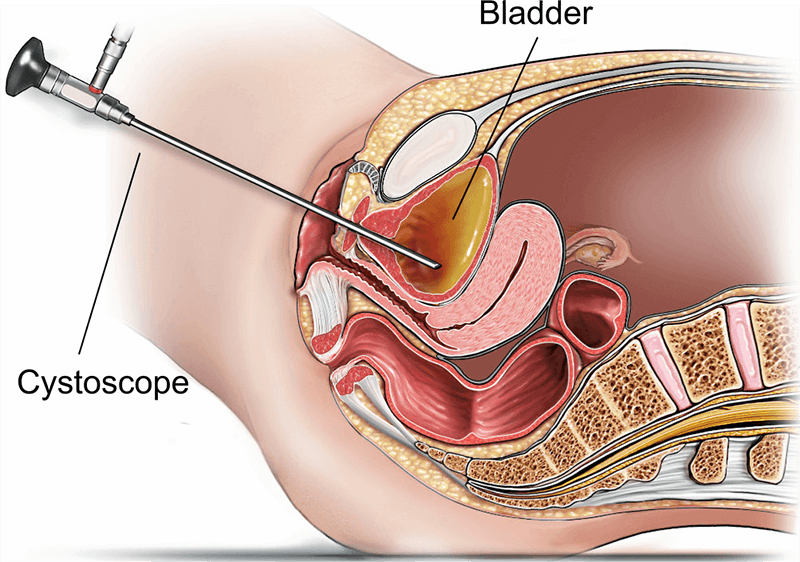
Are there any side-effects or possible complications?
Most cystoscopies are done without any problem. For the next 24 hours child may have a mild burning feeling while passing urine, and feel the need to go more often than usual. Also, the urine may look pink due to mild bleeding, particularly if a biopsy was taken. Occasionally, a urine infection develops shortly after a cystoscopy. This can cause a fever (high temperature) and pain when child passes urine. Rarely, the cystoscope may damage or perforate the bladder.
After child had a cystoscopy, tell your doctor if:
- Pain or bleeding is severe.
- Any pain or bleeding lasts longer than two days.
- Child develop symptoms of infection, such as a fever.


